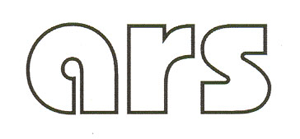Resumo em Português:
Os espaços possíveis para pesquisa em/sobre arte são, na maior parte das vezes, os espaços inter, não são os que se localizam pacificamente em algum ponto ou em alguma posição. O que se configura nessa condição é que, sendo os territórios da arte contextos movediços, é preciso considerar se os intervalos/ pequenos espaços entre esses territórios também o são. Se considerarmos que sim, como determinar o foco da pesquisa? Sendo os intervalos/pequenos espaços plenos de potencialidades, é necessário que as fontes de fruição, contextualização e experimento artístico sejam uma escolha em rede, que perpassam nós, rotas e vãos, sem caminhos exatos nem territórios precisos. Inter_relacionar arte, pesquisa e ensino em consonância com os movimentos e a intencionalidade de ação é uma tarefa complexa, que exige conhecimentos e entendimentos específicos, bem como pensar criativa e metaforicamente conceitos em rede que possuem nós, caminhos e vãos possíveis de convergências e potencialidades de expansão. A plêiade de possibilidades artísticas à disposição e as diferentes concepções do que seja arte - embora hoje o que se questione seja quando é arte – faz do artista contemporâneo um vagueador constante. Não só porque deve estar atento e tentar acompanhar tudo o que se passa no campo artístico, mas também porque é obrigado a mover-se constantemente em direção ao que el@ própri@ busca como expressão artística.
Resumo em Inglês:
The possible areas for research on/about art are, most of the time, the inter spaces, and not those located peacefully at some point or at some position. What is set by this condition is that, once the art territories are shaky contexts, one must consider whether the intervals/small gaps between these territories are shaky too. If we consider that this is true, how to determine the focus of research? As the intervals/small gaps are full of potential, it is necessary for the sources of fruition, contextualization and artistic experiment to be a choice in networking that pervade knots, routes and gaps, without preset paths nor precise territories. To inter_relate art, research and education, in line with the movements and the intentionality of action, is a complex task that requires specific knowledge and understanding, as well as thinking creative and metaphorically the networking concepts that have nodes, spans and possible paths of convergence and potential for expansion. The available pleiad of artistic possibilities and the different conceptions of what constitutes art – although nowadays the question is when something is art – make the contemporary artist a constant walker. Not only because the artist must be aware and try to follow everything that is happening in the artistic field, but also because he is forced to move constantly toward what he seeks as his own artistic expression.
